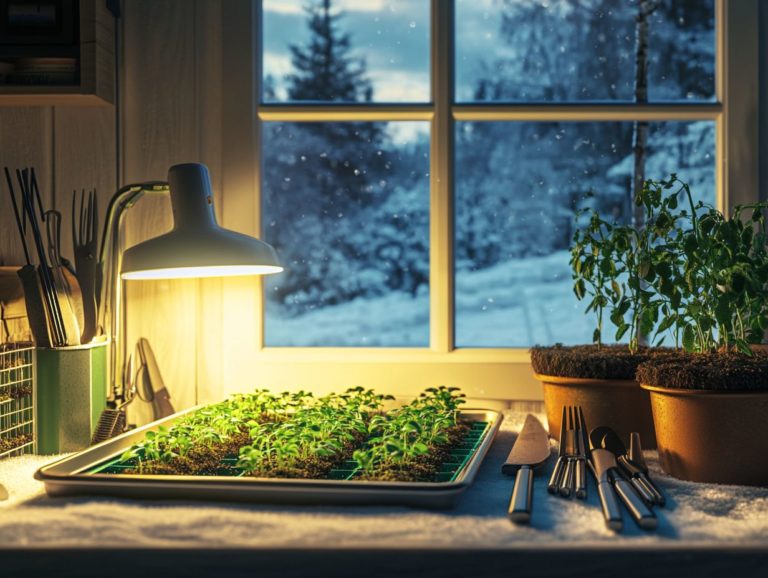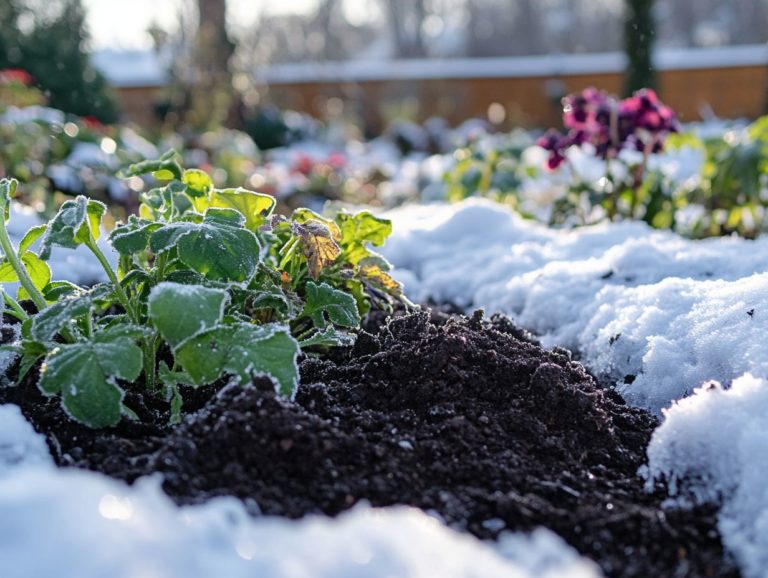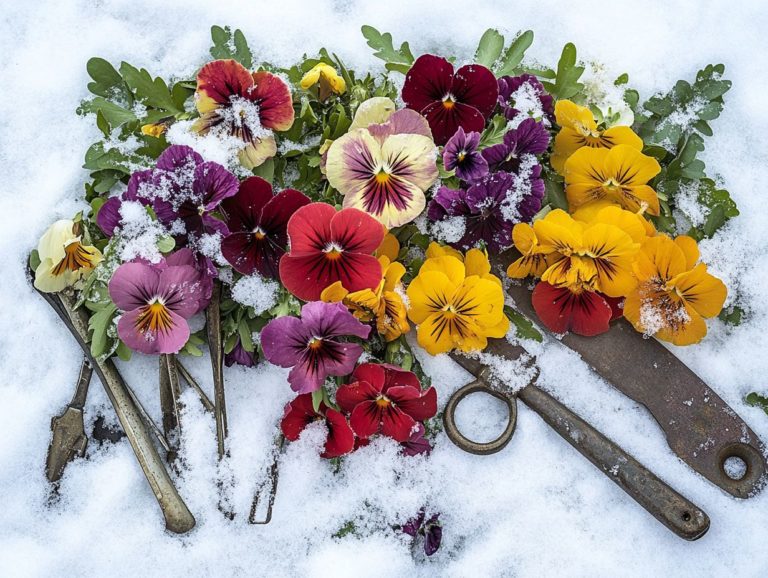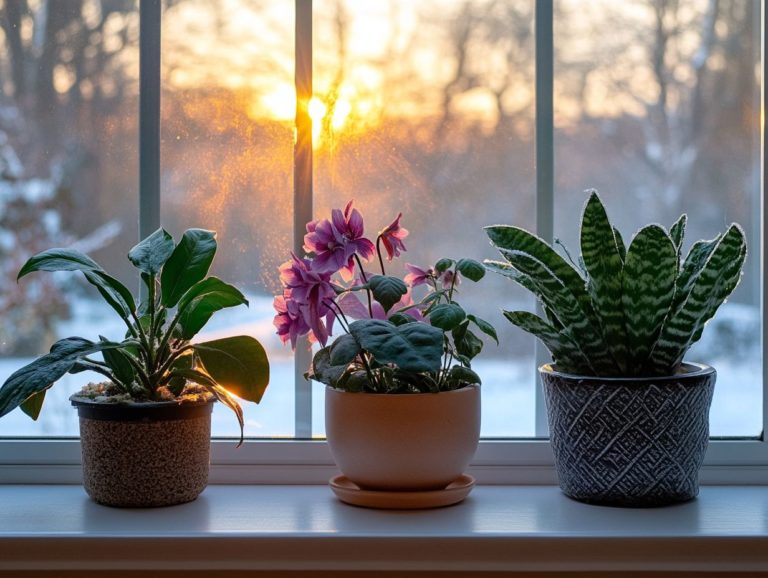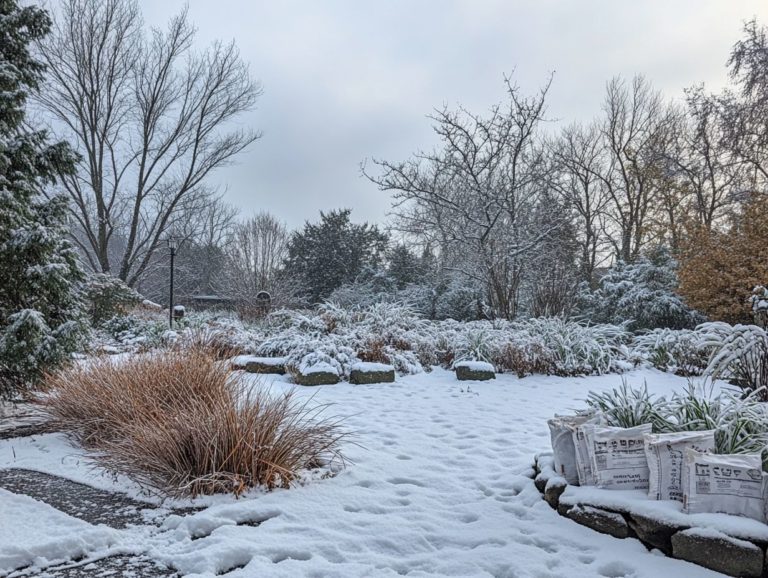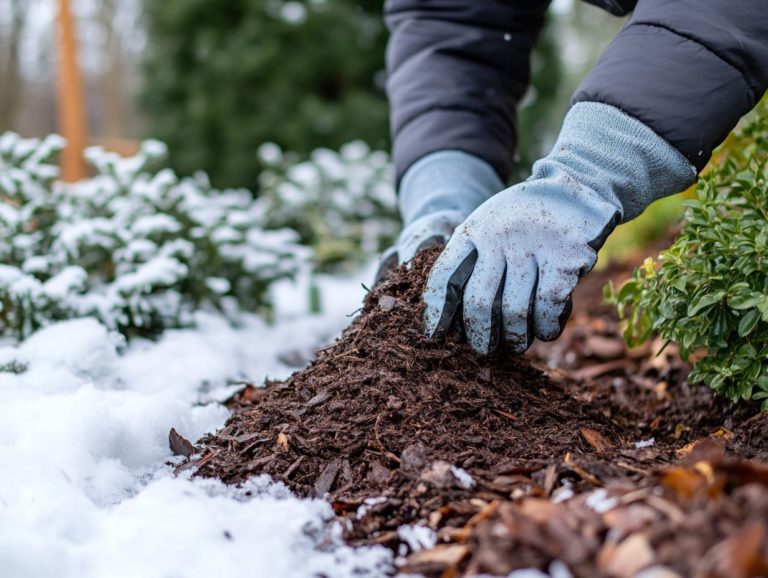How to Create a Cold-Frame for Gardening?
Creating a cold frame can truly transform your gardening experience. It enables you to extend your growing season and nurture your plants in a carefully controlled environment.
Get ready to discover what a cold frame is and delve into its numerous advantages for gardening enthusiasts like yourself. You ll find all the necessary materials and a step-by-step process to craft your very own cold frame.
We will also discuss where to position your cold frame for the best results and provide maintenance tips to ensure your plants thrive.
Dive in and discover how this simple structure can elevate your gardening game to new heights!
Contents
- Key Takeaways:
- What is a Cold Frame?
- Benefits of Using a Cold Frame
- Materials and Tools Needed
- Step-by-Step Guide to Building a Cold-Frame
- Choosing the Right Location
- Maintaining and Using the Cold-Frame
- Frequently Asked Questions
- What is a cold-frame and why should I use one for gardening?
- What materials do I need to create a cold-frame?
- Where should I place my cold-frame for optimal results?
- How do I prepare the ground before setting up my cold-frame?
- Can I use a cold-frame for all types of plants?
- How do I regulate the temperature inside my cold-frame?
Key Takeaways:
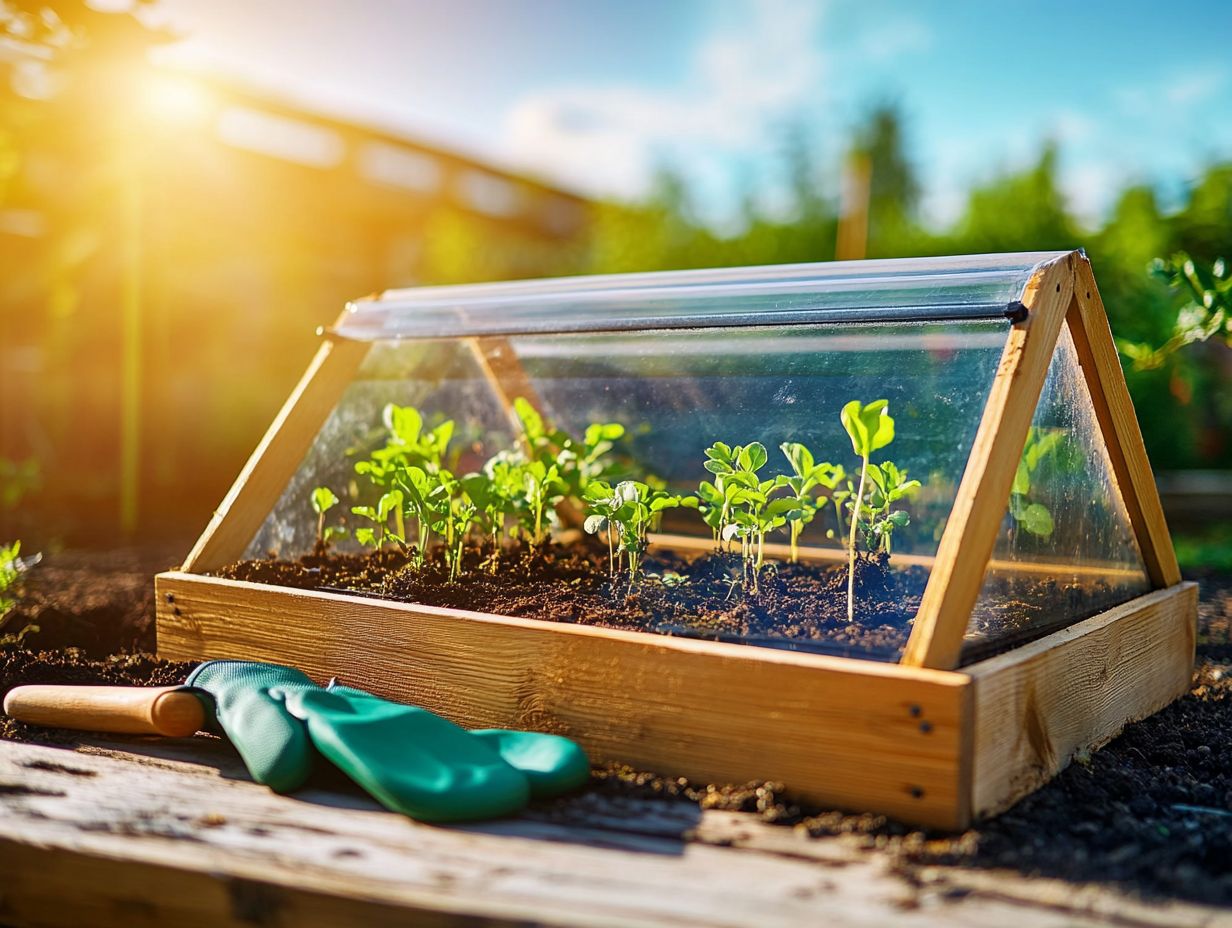
- Extend your gardening season by creating a cold frame, a simple and cost-effective structure that protects plants from harsh weather.
- A cold frame provides a controlled environment for seedlings to grow faster and healthier, making it ideal for starting plants early in the season.
- To build a cold frame, gather basic materials like lumber and hinges, and choose a suitable location with access to sunlight and protection from strong winds.
What is a Cold Frame?
A cold frame serves as an elegant solution for gardeners seeking to shield their plants especially vegetables and seedlings from the harshness of winter. It extends their growing season. This straightforward, enclosed structure is typically crafted from materials such as plywood, PVC, or acrylic sheeting, effectively creating a greenhouse effect that captures the sun s heat to keep your plants cozy.
For those who are new to gardening, a cold frame becomes an invaluable asset. It allows you to cultivate cold-weather vegetables like kale, spinach, and arugula even during the winter months. This approach gives you the power to thrive in your gardening endeavors, regardless of the local climate challenges you may face.
Definition and Purpose
The primary purpose of a cold frame is to give you a controlled environment for growing plants. This is especially useful during the colder months or in regions where the weather can be temperamental.
This simple yet effective gardening structure serves as your own mini-greenhouse. It ensures better temperature regulation to promote the healthy growth of your plants. With features like transparent lids, it lets sunlight in while trapping warmth, creating an ideal sanctuary for your young seedlings.
For example, vegetables such as lettuce, spinach, and radishes thrive in these cozy conditions. This allows you to start planting weeks earlier than you usually would.
Think of the cold frame as a protective barrier against harsh frost. It significantly reduces stress on delicate plants and extends your growing season. Even tomatoes and peppers can reap the rewards of this protective measure, enabling you to enjoy a bountiful harvest, even when the temperatures dip.
Benefits of Using a Cold Frame
Utilizing a cold frame presents a multitude of benefits for the discerning gardener. It enhances growth conditions for cold-weather vegetables.
At the same time, it optimizes heat use, resulting in earlier harvests and prolonged growing seasons.
Embracing this technique allows you to maximize your gardening potential. This ensures that your efforts yield bountiful results.
Advantages for Gardening
Cold frames offer essential protection for your young plants. This allows you to plant early and ensures that your seeds and seedlings are shielded from harsh weather conditions.
By creating a microclimate a small area with different weather conditions cold frames give you the power to cultivate a wider array of plants throughout the year.
You can grow robust choices like radishes, which thrive in cooler temperatures, alongside delicate herbs such as basil and cilantro, which often struggle in frosty conditions.
This method not only extends your growing season but also provides an exciting opportunity to experiment with diverse crops, leading to a more varied harvest.
You can explore a range of design options, from simple wooden structures to more sophisticated glass frames. This makes this an accessible project even for those just starting out.
Plus, the added benefit of protecting your young plants from pests and unpredictable weather can significantly elevate your gardening success.
Start today, and see how easy and rewarding gardening can be!
Materials and Tools Needed
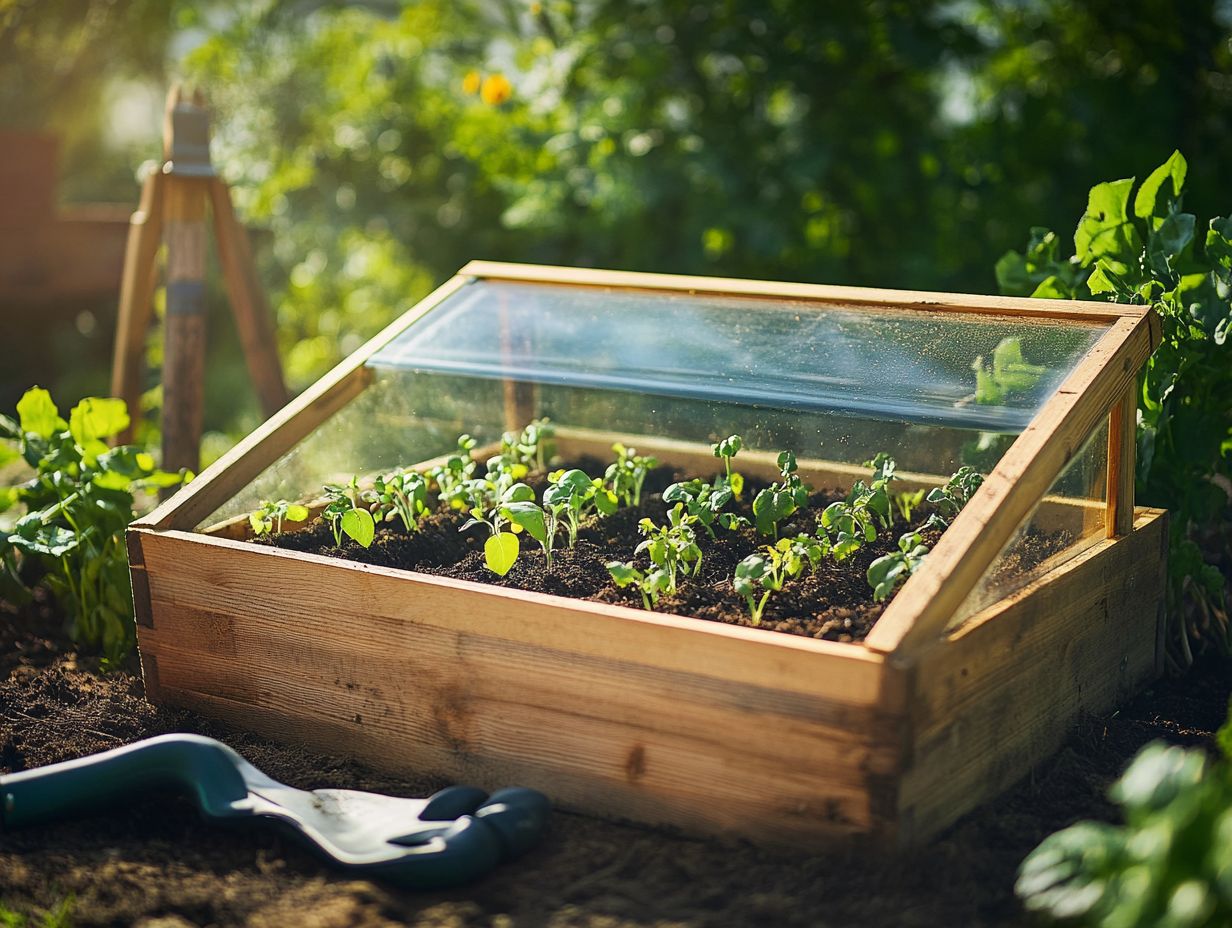
When embarking on the creation of a cold frame, choose wisely your materials and tools. Opt for sturdy plywood, PVC, or acrylic or plastic sheeting for the glazing, which is the transparent cover that allows sunlight in while keeping the cold out. For more detailed guidance, check out how to use cold frames effectively to provide optimal insulation.
Don t forget the essential hardware screws and bolts that will ensure the durability and longevity of your structure.
Essential Supplies for Building a Cold-Frame
Essential supplies for building your cold frame include sturdy materials for the frame itself, like PVC or plywood, along with tools such as drills and screws for assembly.
Don t forget additional components like cinderblocks or straw bales for insulation. These materials go beyond mere structure; they play a crucial role in keeping the right temperature within your cold frame, ensuring your plants thrive even as the weather outside fluctuates.
When sourcing supplies, consider visiting local hardware stores for budget-friendly options or explore online marketplaces where you might find users selling excess materials. Upcycled items can be a sustainable choice; using old windows for glazing can not only let in sunlight but also boost warmth retention.
By thoughtfully selecting and combining these materials, you can craft a highly functional cold frame that protects your plants while promoting growth in cooler climates.
Step-by-Step Guide to Building a Cold-Frame
Building a cold frame requires a thoughtful and organized approach. Begin by planning the design that best suits your gardening goals, and consider how to use greenhouses for cold-climate gardening, then gather all the essential materials.
Follow a clear set of instructions that will guide you through each step, ensuring that the final structure not only meets your needs but also enhances your gardening experience.
Instructions and Tips
To effectively build a cold frame, follow these instructions while ensuring adequate ventilation and maintaining proper temperature control. This will create an optimal environment for your plants.
This structure is essential for extending the growing season and protecting delicate seedlings, and it requires careful planning and execution. When crafting the cold frame, it’s crucial to select materials that allow sunlight in while providing insulation against the cold.
Incorporating adjustable vents will help you regulate airflow, preventing overheating and moisture buildup that could lead to mold. Keep your local climate in mind, as it will influence how much insulation you need. Always prioritize safety by avoiding sharp tools and practicing proper lifting techniques.
Avoid placing the frame in shaded areas and neglecting to monitor temperature variations throughout the day.
Choosing the Right Location
Choosing the perfect spot for your cold frame is essential, as it directly influences sunlight exposure, temperature regulation, and the overall success of your gardening pursuits.
Factors to Consider
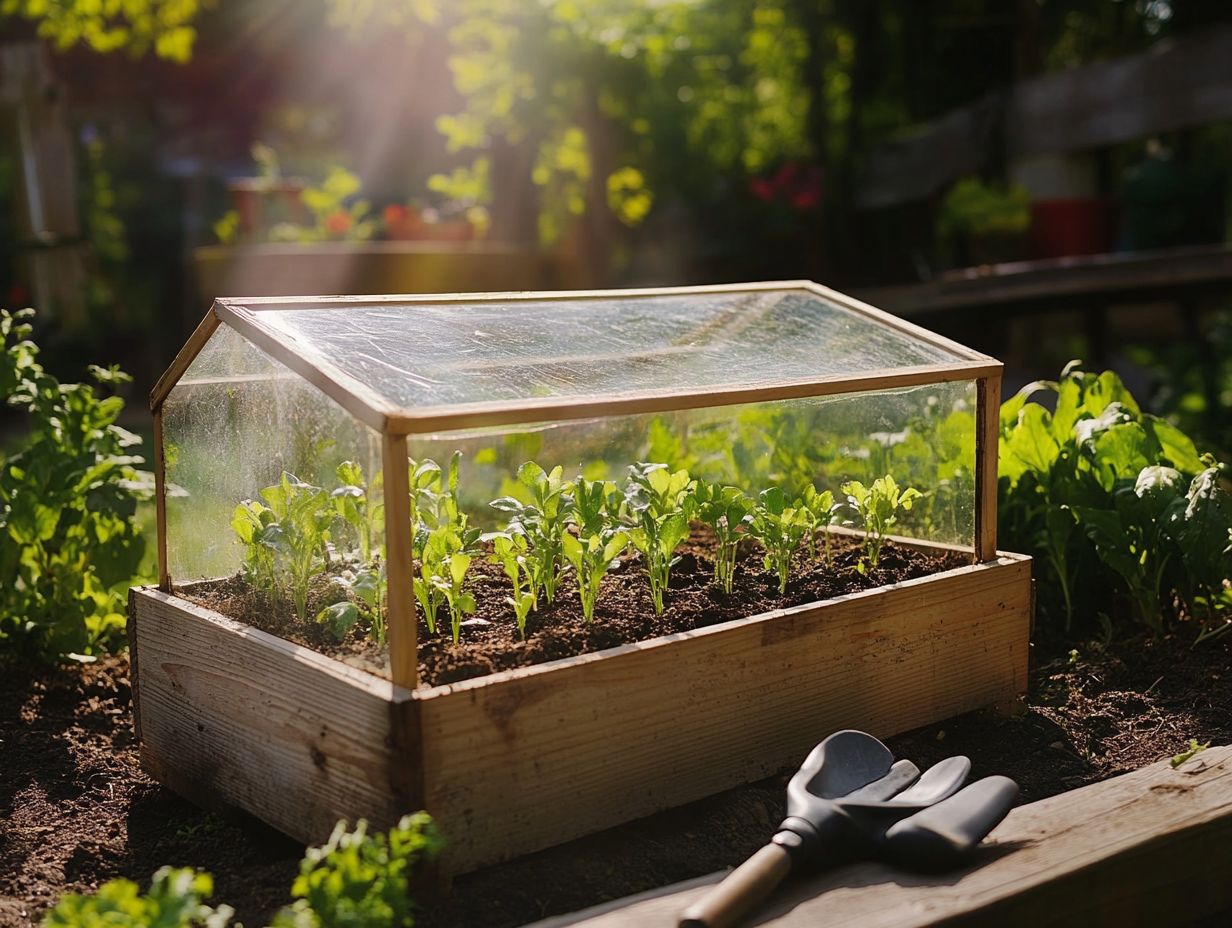
When selecting the perfect spot for your cold frame, consider essential factors like sunlight availability, prevailing winds, and the local climate. These elements are crucial for creating optimal growth conditions for your plants.
For instance, placing your cold frame in a location that enjoys at least six hours of direct sunlight daily can significantly raise temperatures and encourage robust growth. Be mindful of prevailing winds to protect your plants from harsh conditions; situating the cold frame near a windbreak, such as a fence or hedge, can effectively block cold drafts that might stress your plants.
Seasonal adjustments are equally important. As the sun s angle shifts throughout the year, you might want to reposition your cold frame to face southeast in early spring and southwest in late autumn to maximize solar exposure. Keeping a close eye on the local climate and adjusting the structure as needed will ensure your plants receive consistent warmth while avoiding overheating during those hotter months.
Start planning today and watch your garden thrive!
Maintaining and Using the Cold-Frame
To maintain the effectiveness of your cold frame, keep a close watch on the temperature and ensure adequate ventilation. These factors are vital for fostering optimal plant growth throughout the season.
Tips for Successful Gardening
Implement effective gardening tips for your cold frame to encourage flourishing plant growth. Understand temperature control and create ideal conditions for your seedlings to thrive.
Establish a regular watering schedule to maintain moisture balance an essential factor for seedling vitality. Pay close attention to your plants’ specific needs and adjust watering frequency based on weather conditions and soil moisture levels.
Integrate pest management strategies to safeguard your delicate seedlings from common threats like aphids and spider mites. Select robust plant varieties well-suited for cold frame cultivation to enhance resilience and yield, ensuring your garden thrives throughout the growing season.
Frequently Asked Questions
What is a cold-frame and why should I use one for gardening?
A cold-frame is a simple, inexpensive structure used in gardening to extend the growing season and protect plants from harsh weather. It’s a great way to start seeds earlier in the spring and keep plants growing later into the fall.
What materials do I need to create a cold-frame?
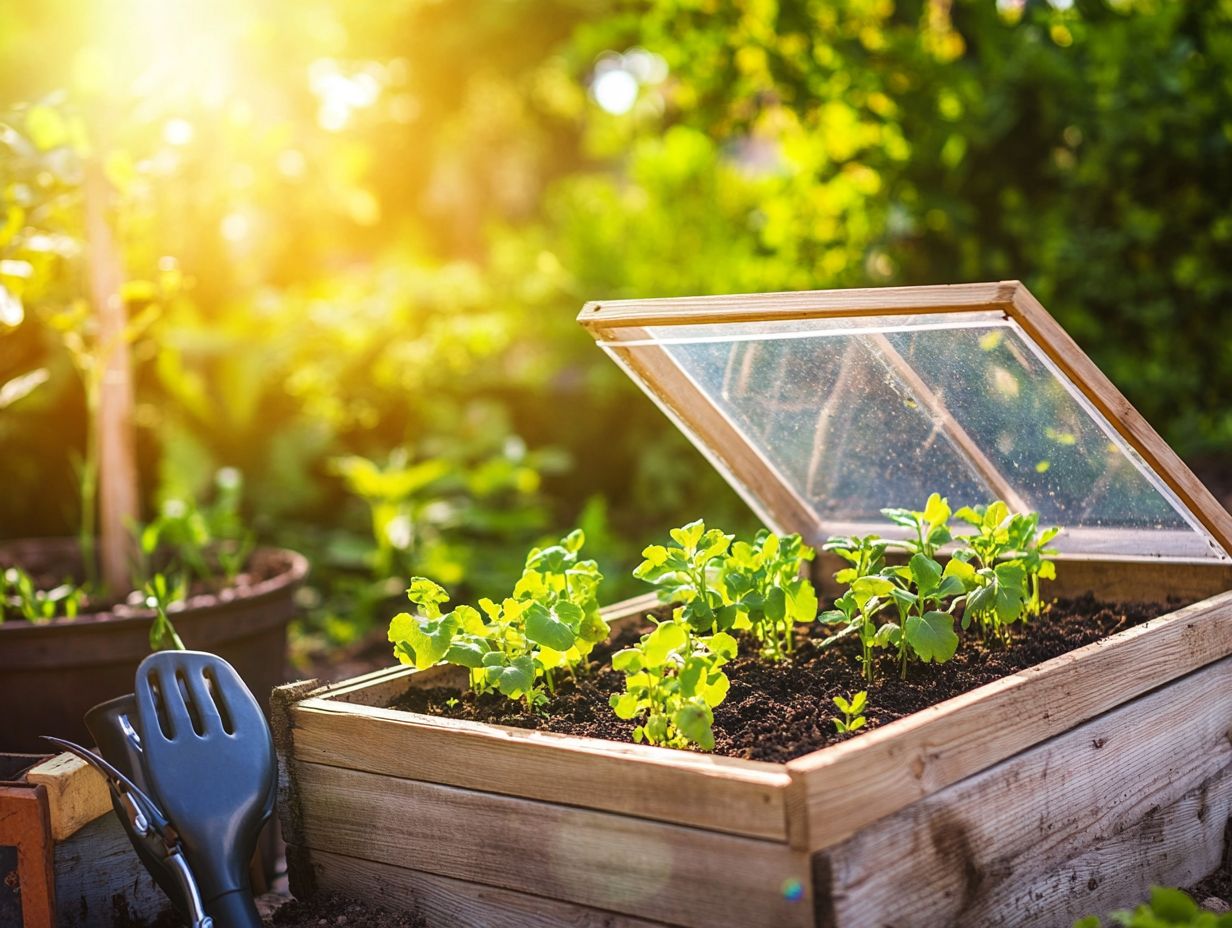
To create a cold-frame, you’ll need a wooden or metal frame, clear plastic or glass panels, hinges, and a latch or handle for the lid. For more effective winter gardening, check out this guide on how to use cold frames. You can also use recycled materials like old windows or doors for the panels.
Where should I place my cold-frame for optimal results?
Choose a location for your cold-frame that receives full sun for at least six hours a day. It should provide protection from strong winds and have good drainage. Placing it against a south-facing wall or fence is ideal.
How do I prepare the ground before setting up my cold-frame?
Before setting up your cold-frame, clear the area of debris and level the ground. Add a layer of gravel or sand for better drainage. If planting directly in the ground, loosen the soil and add compost for nutrients.
Can I use a cold-frame for all types of plants?
Absolutely! A cold-frame works well for vegetables, flowers, and herbs. Just choose plants with similar growing requirements and adjust the temperature inside accordingly.
How do I regulate the temperature inside my cold-frame?
You can regulate the temperature inside your cold-frame by adjusting the lid. On warmer days, prop it open slightly for air circulation, and on colder days, keep it closed to retain heat. Use a thermometer to monitor the temperature and make adjustments as needed.
Start your cold frame today and watch your garden flourish!

